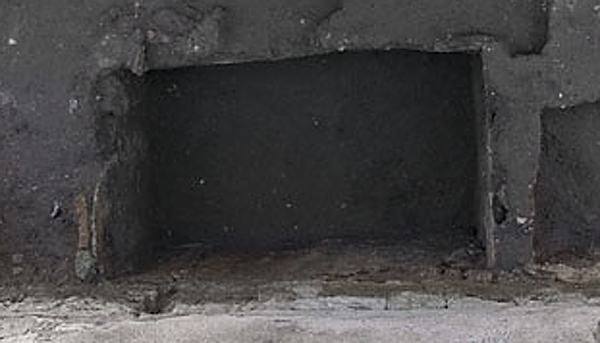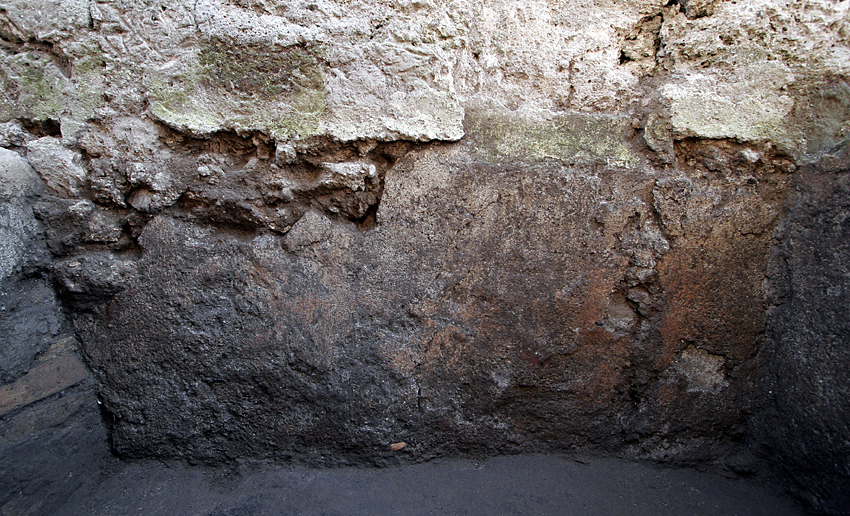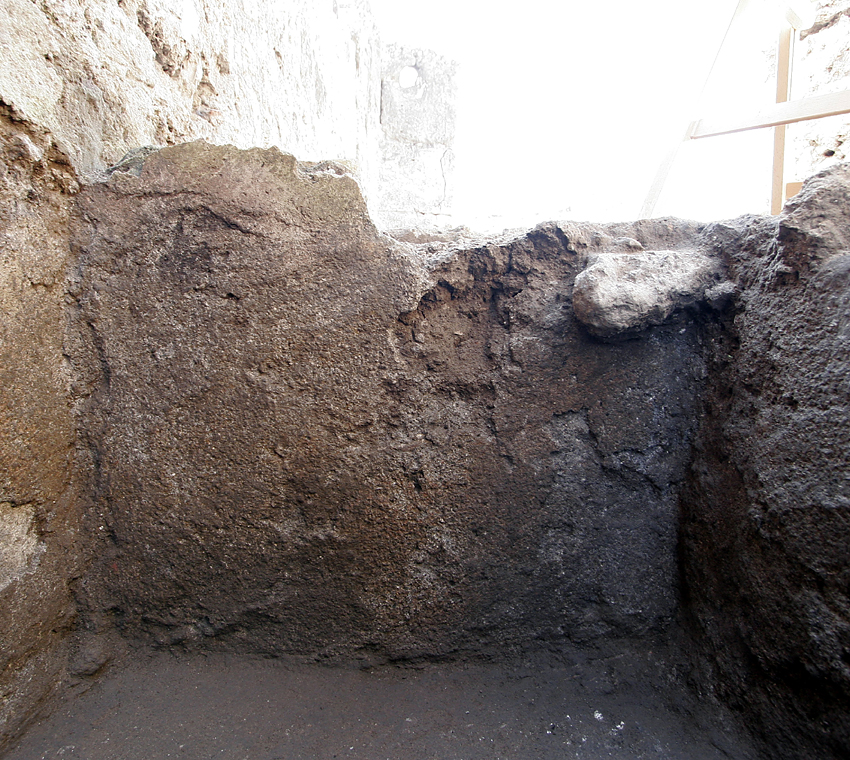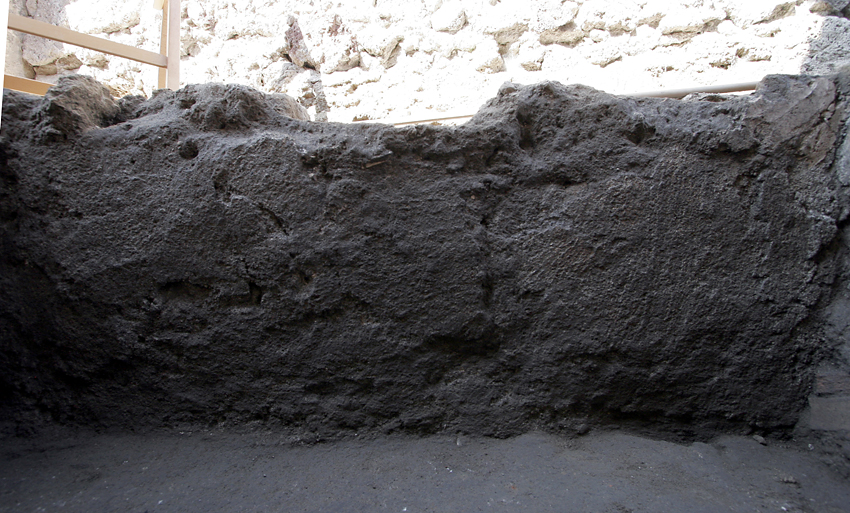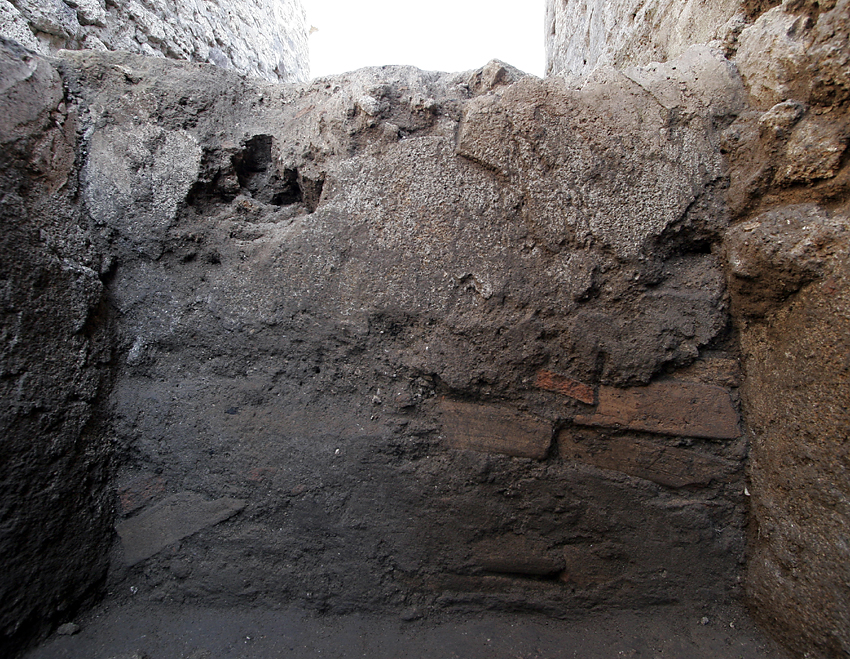Basin
Description
Henrik Boman & Monika Nilsson
A sunken basin was found in the floor in the corridor, abutting the S wall. The S wall and, presumably, an earlier floor were used for the construction of the basing. The other sides of the basin are built in scramble material, stone and terracotta fragments, as is visible where the plaster surface has fallen off. The lack of freestanding walls, supporting the sides of the basin, suggests that the basin was sunken into the floor of the corridor.
The basin measures 1.38 x 0.76/0.78m.
W side:
The side is covered with grey plaster, with large black intrusions, and it abuts to the S wall. Beneath the surface, a grey but softer plaster is found, c. 2 cm thick, applied to the material in the side. The bedding for the plaster is visible where the plaster has fallen down - the surface prepared for the plaster. As we can see from the area surrounding the basin, there are no freestanding supporting walls behind the plaster. There are traces of red fine plaster preserved on the upper W face of the wall.
The wall plaster seems to be built upon the earlier existing floor.
Floor: The floor is hard, with greyish brown colour and large terracotta inclusions. A thin layer of soot covers the floor.
S side: The E part has caved in, thereby exposing the stone and mortar core. Three plaster layers are visible (a-c), the third layer (c) covers almost all of the surface on the S side.
The first layer (a), found in the in the lower part, is a light grey plaster, the same type as on the W side. This plaster (a) seems to have a red wash over it, though the surface is rough and at several placed destroyed. The second layer (b), found c. 0.62m above the floor and with an uneven edge to the first layer, is a lighter, harder plaster. At some locations plaster (a) seems to cover plaster (b); they seem undoubtedly to be connected to each other. The third and top layer (c), ought to be related to the new floor in the corridor and covers almost all of the S surface of the basin, except in a gap where plaster (b) is visible.
In the E part, stone and mortar project outside the line of the wall, a few cm, and they cannot have been plastered over. There are no indications for that the wall had been repaired or rebuilt after being destroyed or damaged in antiquity.
The plaster is too soft for a hydraulic plaster. Edges and corners seem not to have been watertight.
E side: The plaster on this side is similar to the other sides, i.e. a finer red plaster covering the underlying greyer and softer plaster. The plaster is completely destroyed in the lower part of the E side.
The wall behind it is built in tile (reused), pottery and clay mortar (earth mortar). No other stones are identifiable and holes in the plaster show only soft earth.
N side: Plaster preserved over all of the surface, only two layers visible. The top layer is red, as on the other sides, with marks after some kind of implement on the E part. There seems to be earth behind the plaster at locations, as on the E side. A few bricks and clay mortar support the plaster, though not as a constructed, free-standing wall.

